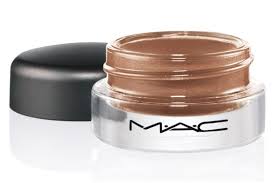Hi there!
Penny is no make-up artist and doesn't play one on TV, but I've learned quite a bit over the years. Friends and family often ask about my make-up looks, products, tools, and/or application. Here are some of the most common tips I get asked about.
 |
Sephora Pro Stippling
Brush #41 |
Concealer - When choosing a concealer it is best to remember that various types of concealer work best depending on what you want to conceal. Liquid and more lightweight concealers work best for under eye circles. While cream or thicker formula concealers work better to cover blemishes and other areas of hyperpigmentaiton on the face. It is also important to have a good concealer brush, makeup sponge (or better yet, a clean finger tip).
Start with less and then add more to build coverage.
Foundation - Think about it...if you take the time to put on your concealer, why mess it up by dragging your foundation across your face and disturbing that concealer underneath. The same goes for blush over foundation (except for application w/ a super soft blush brush). Penny knows that some of you apply concealer on top of your foundation or BB cream, however, because I have so much to conceal (cheek area where I have melasma)...I put my concealer on first. The trick to the full, all-day coverage I get is my application technique. I use a flat kabuki brush (Sigma F80)to stipple/pat the concealer into the skin. So when I apply foundation to those areas, I use the same motion with a different stipple brush (Sephora Pro Large Domed Stippling Brush #41). When I set with powder I also 'press' the powder with a sponge into the skin instead of dragging a brush across the area and disturbing what's underneath.
 |
MAC Paint Pot
in Groundwork |
Eyeshadow - Penny has a few tried and true ways to apply long-lasting eyeshadow. My lids are dark from allergies, and not necessarily smooth, so I always need 3 things to make my eye make-up look last: 1) primer; 2) base (to even out skin tone and keep the shadow true to color); and 3) a good blending brush (i.e. MAC 224 or Sigma E40). My favorite primer is Too Faced Shadow Insurance and my favorite base is MAC's Paint Pot. But the real key to a good eyeshadow look is to BLEND. Remember less is always better, until you learn an application technique that compliments your eyes. Think about your eye shape when choosing a style and even when choosing colors. For example, if you have small eyes, but like darker shades, know that they may make your eyes look even smaller. It doesn't mean you can't wear a darker shade; but it could mean that you apply it lightly and maybe blend with another lighter color.
(read full story...)